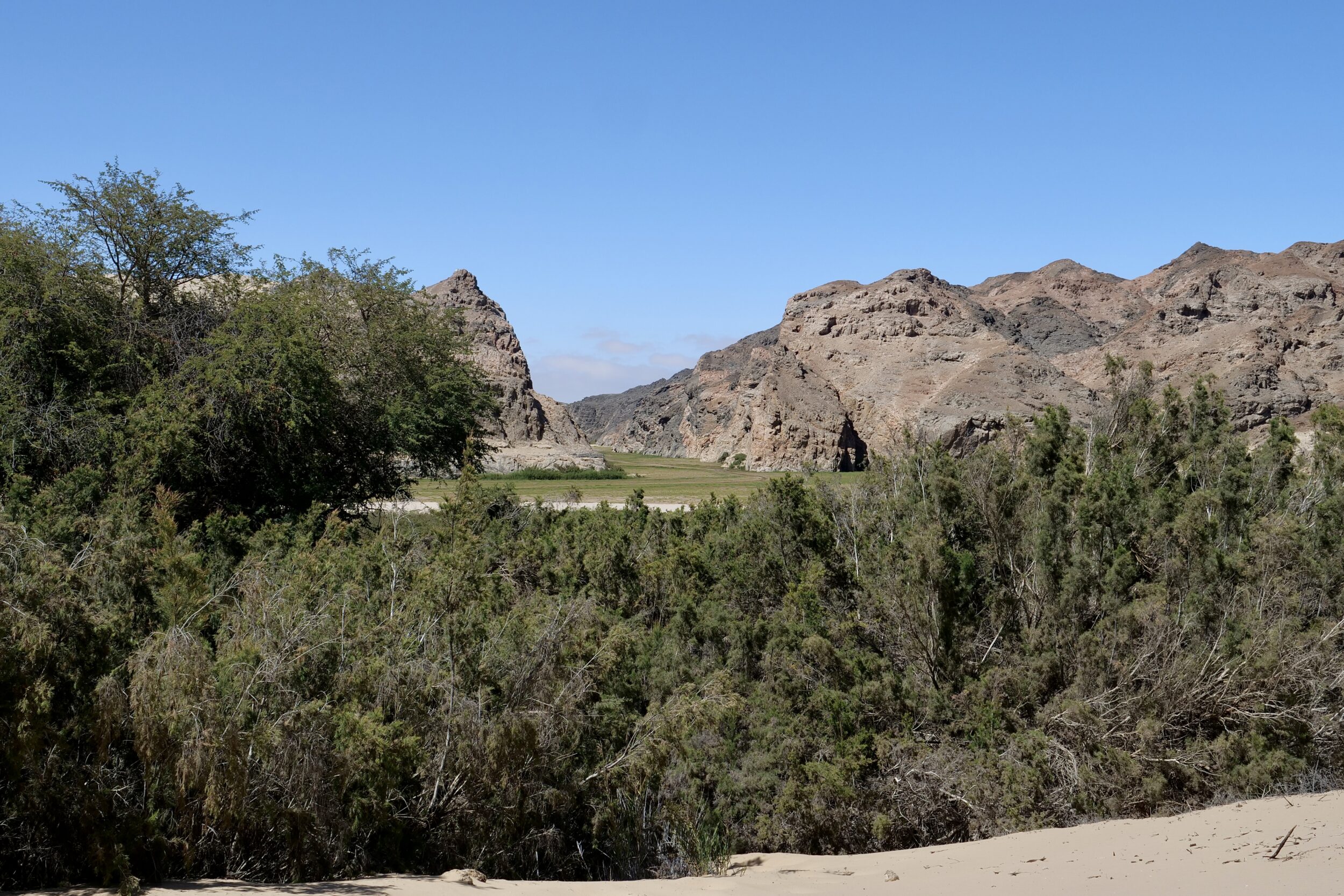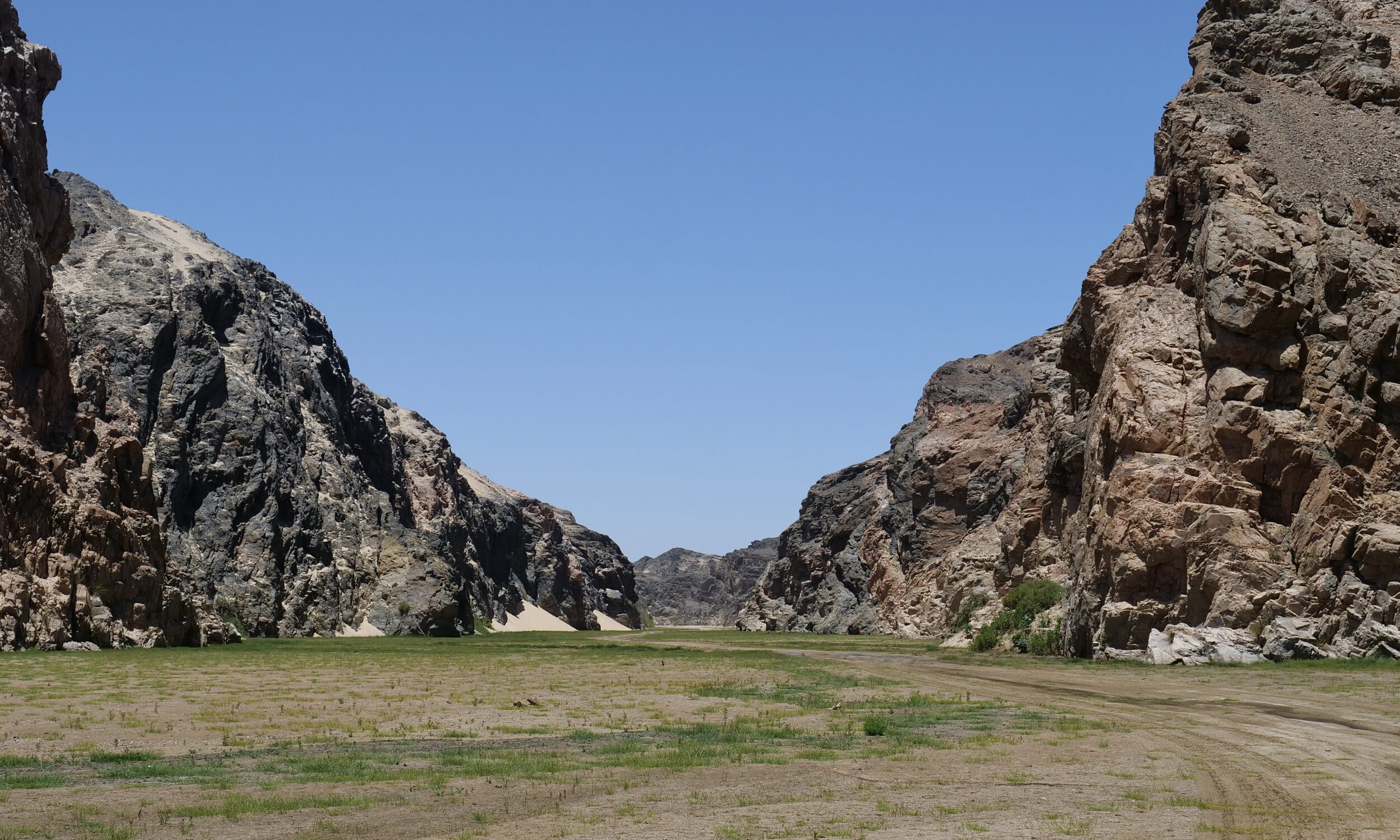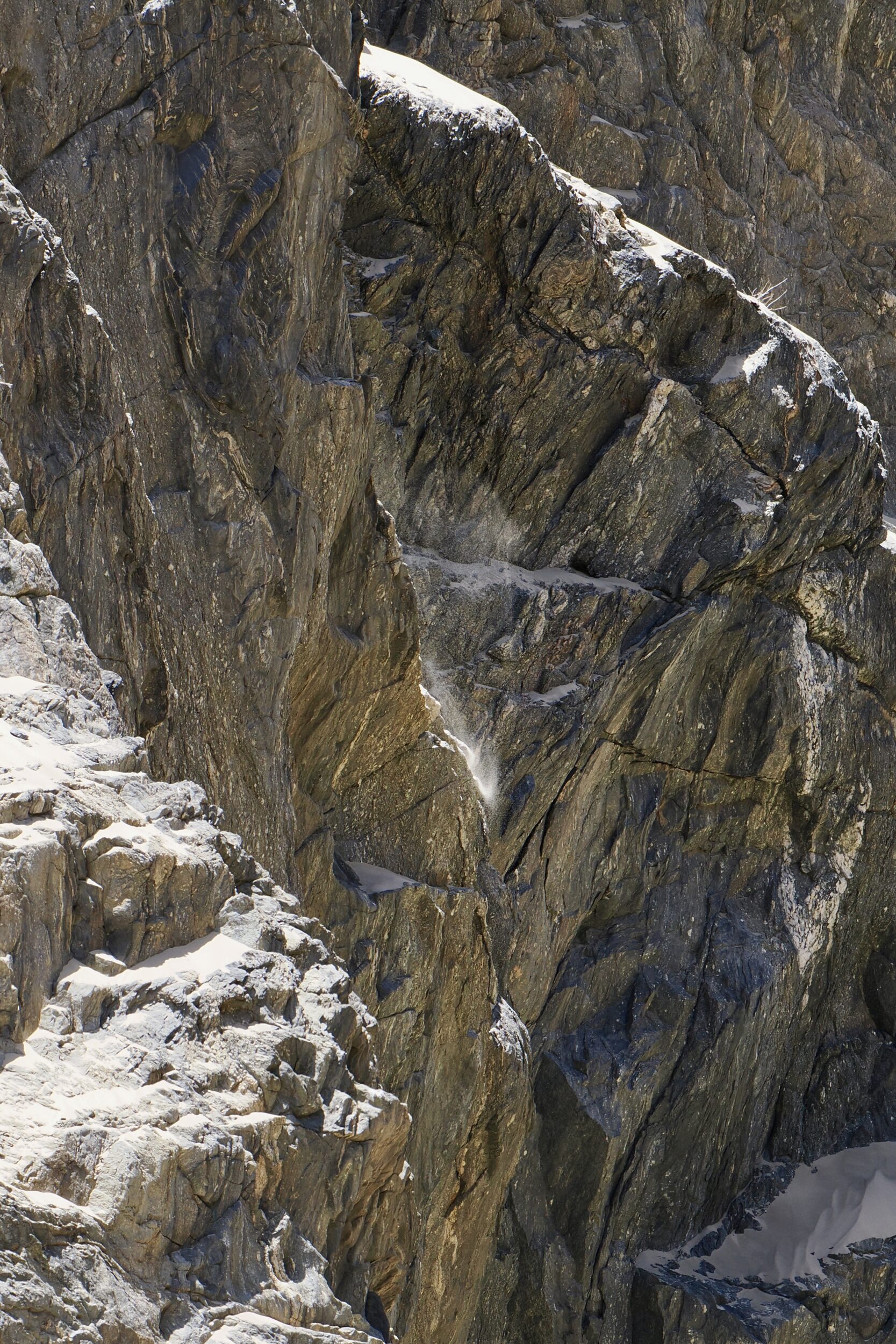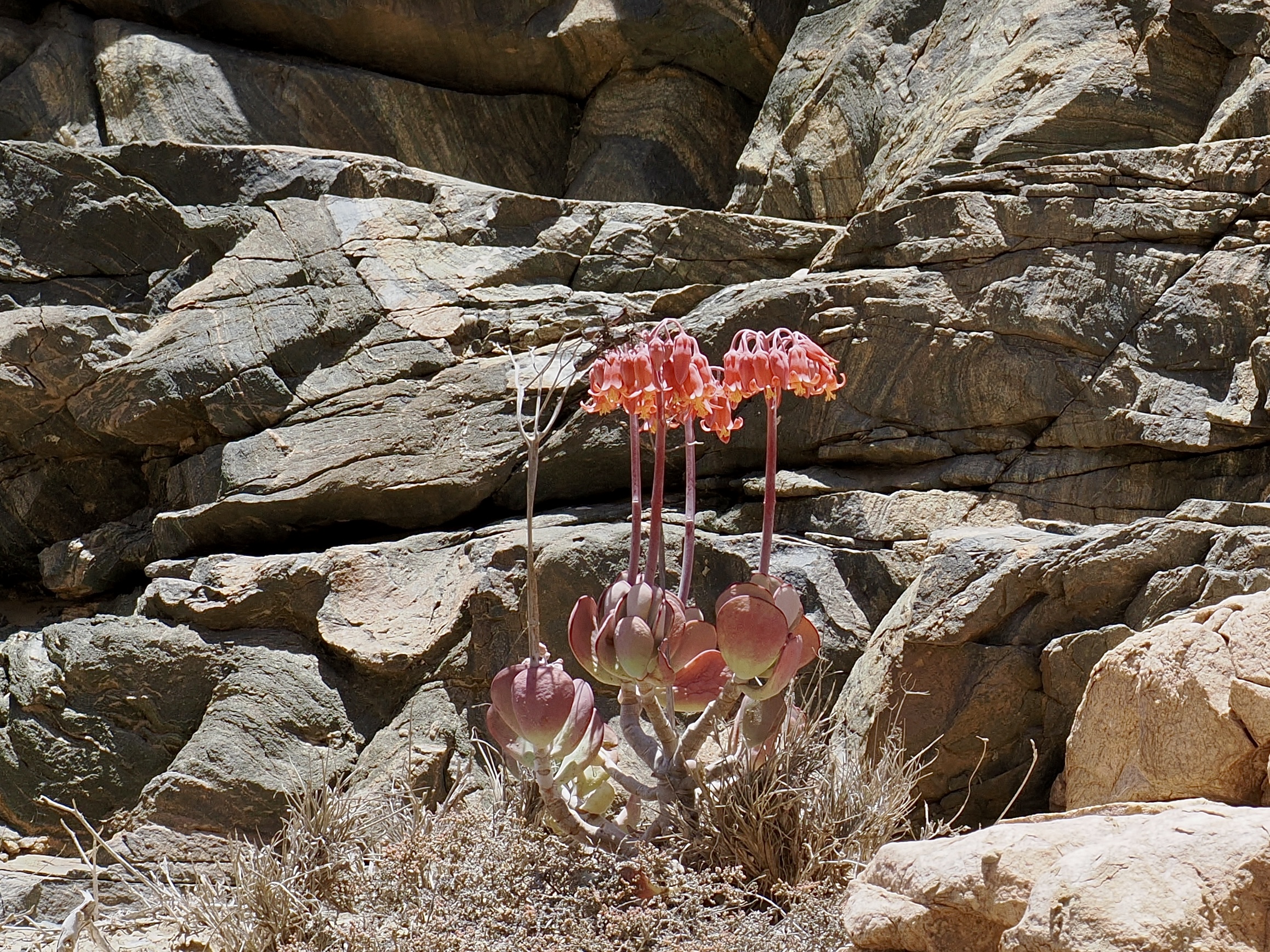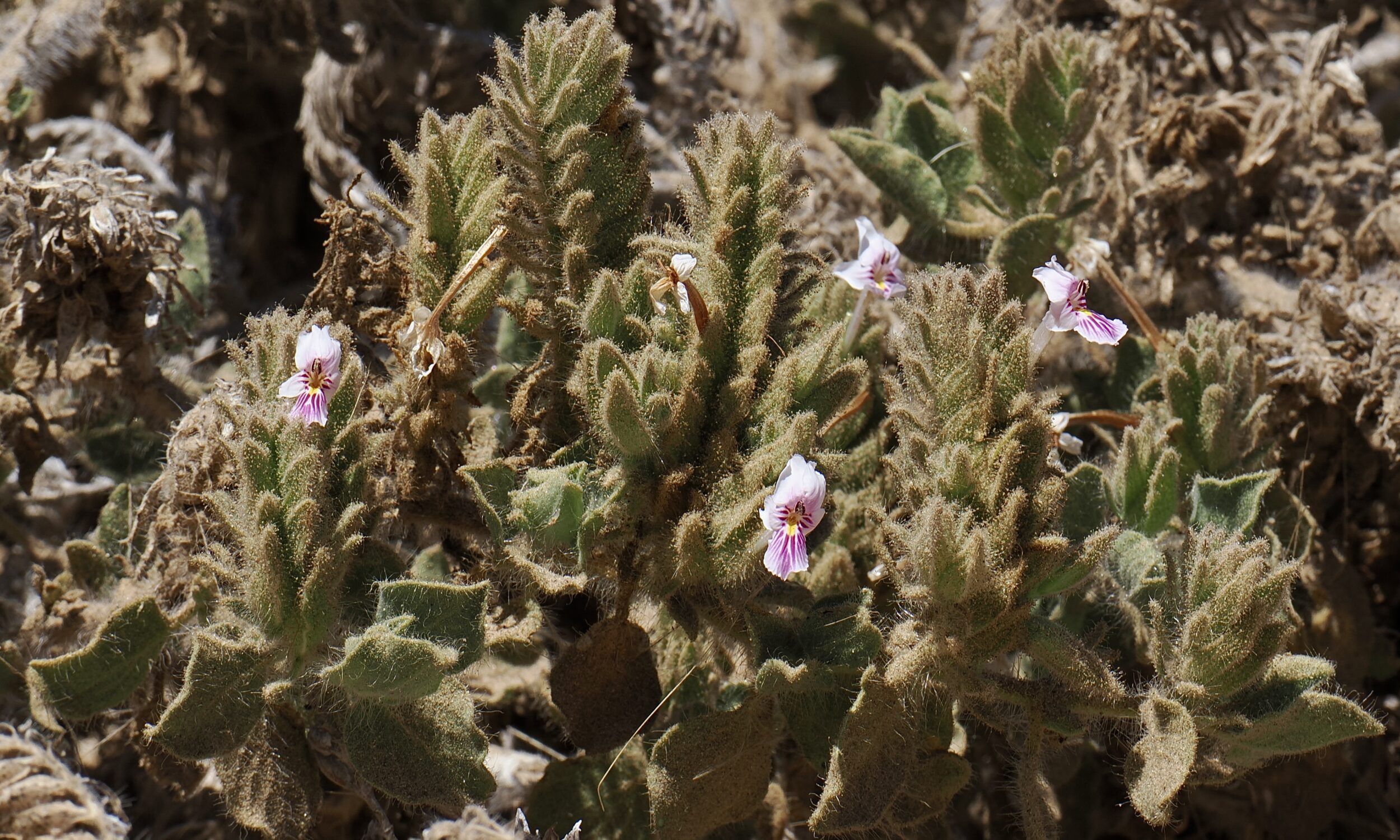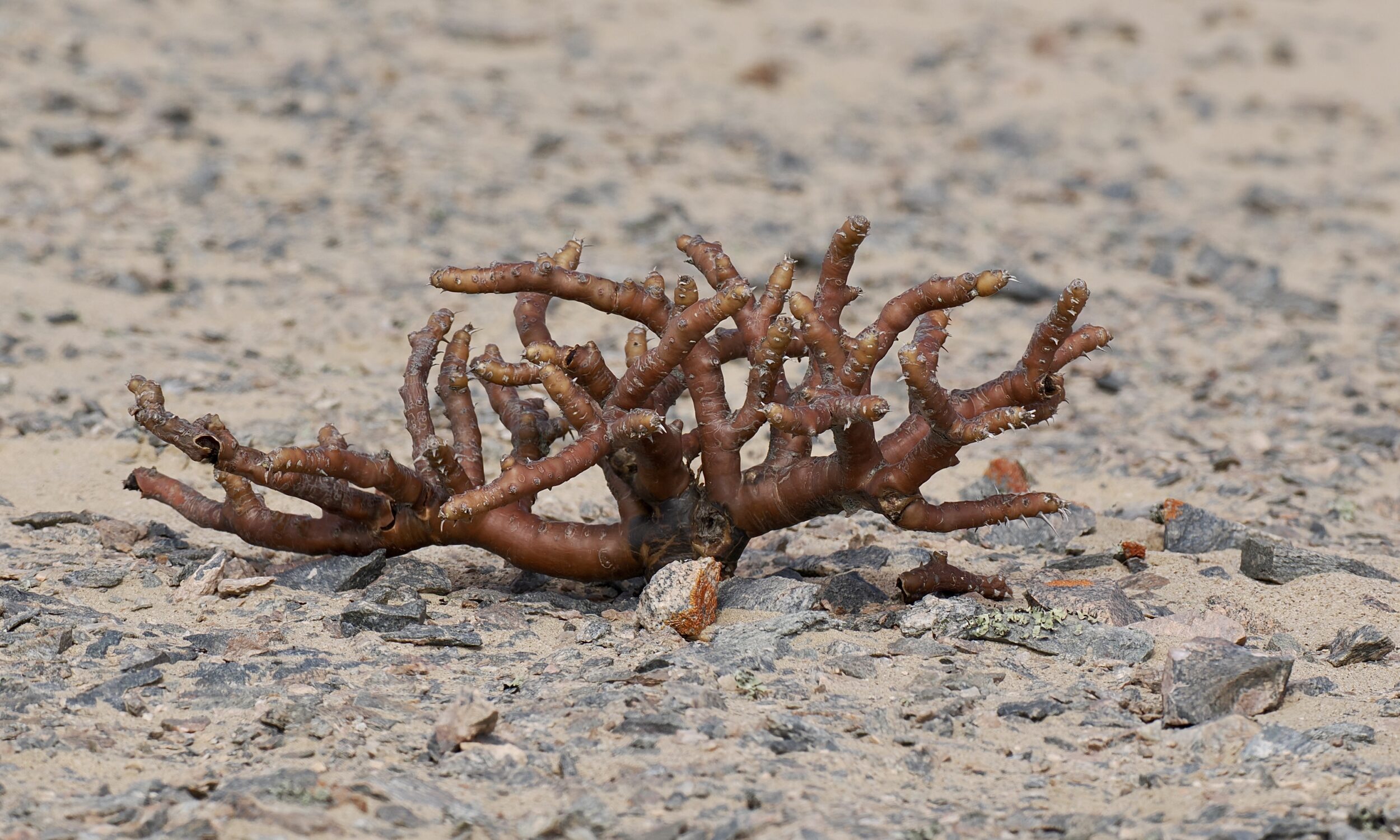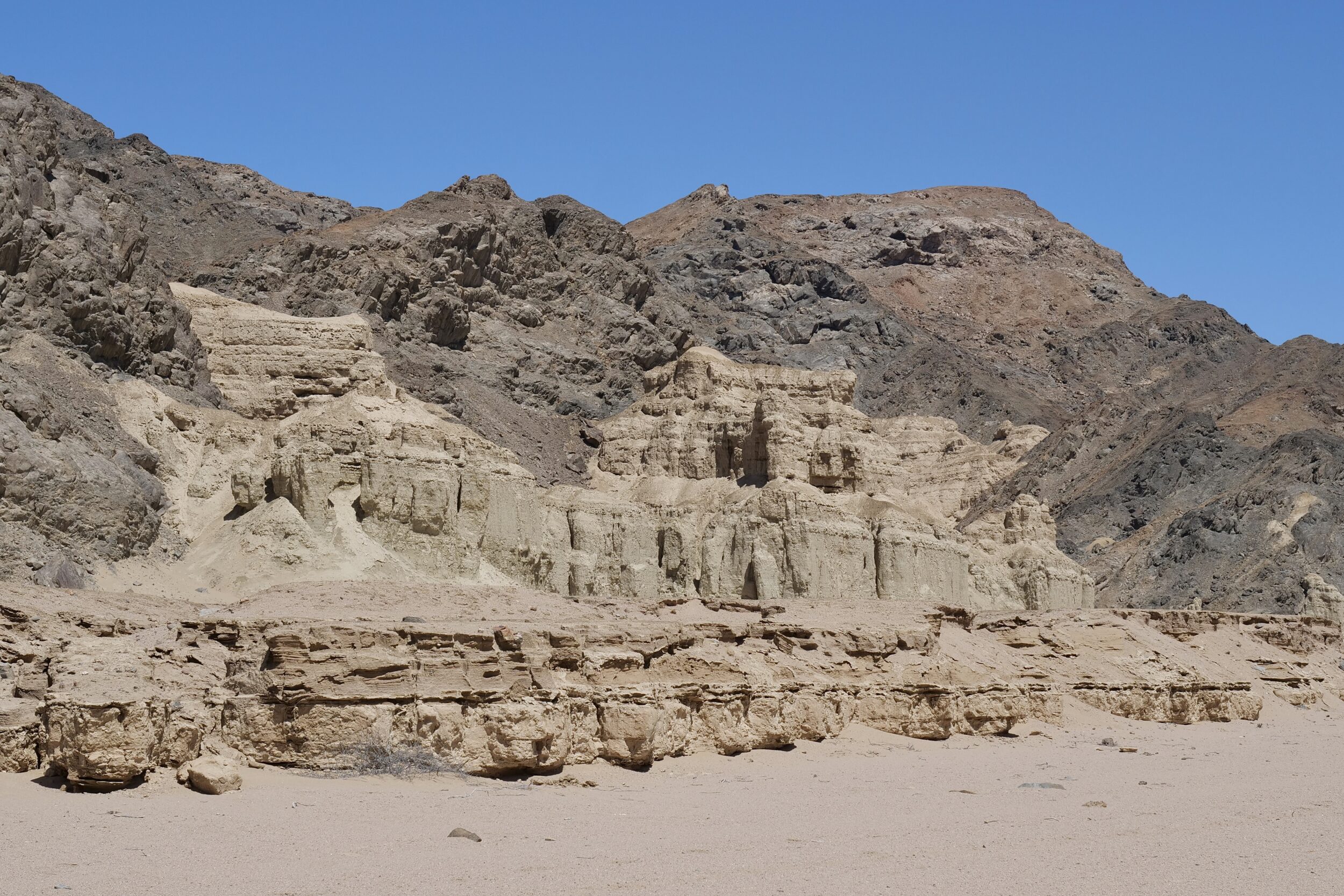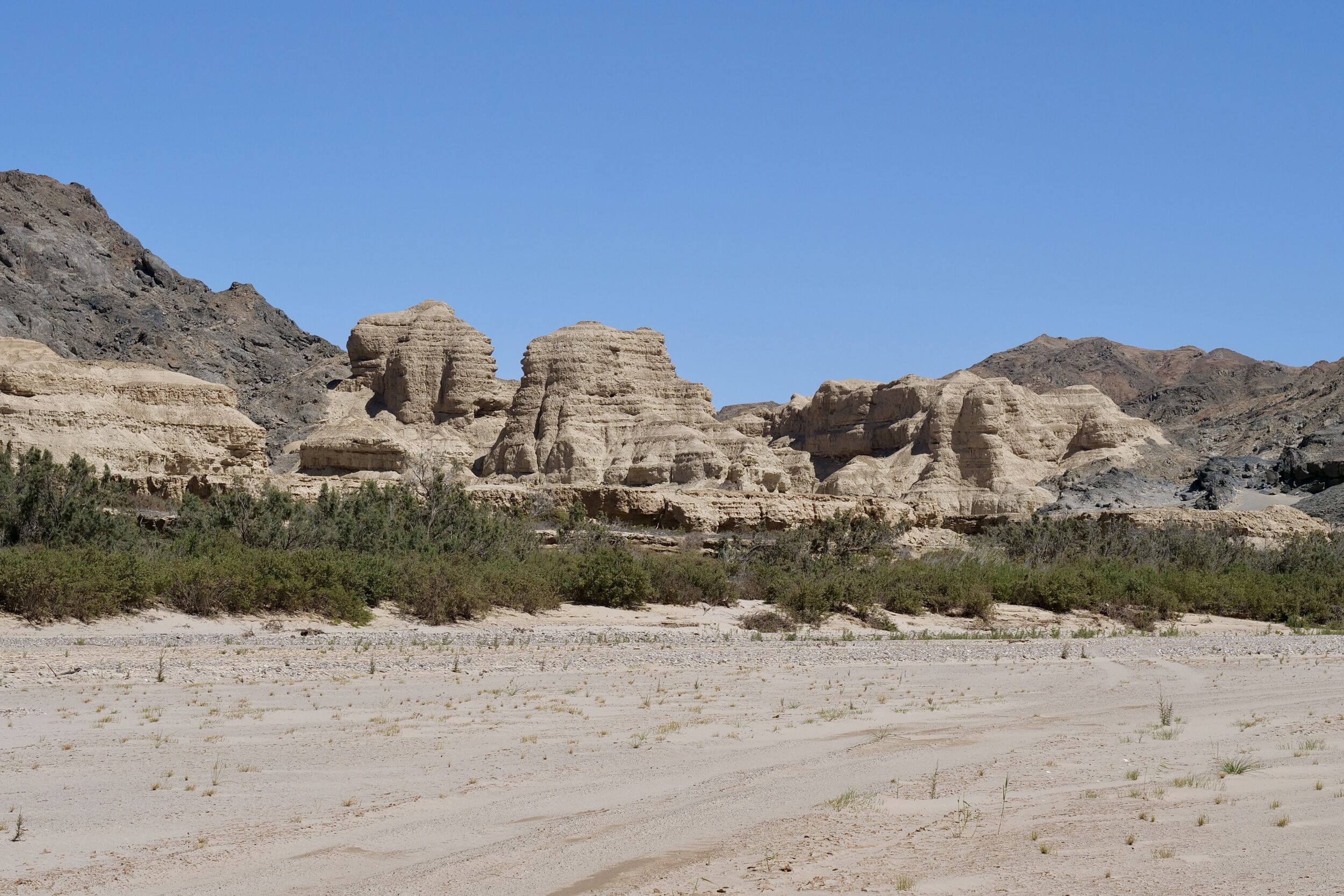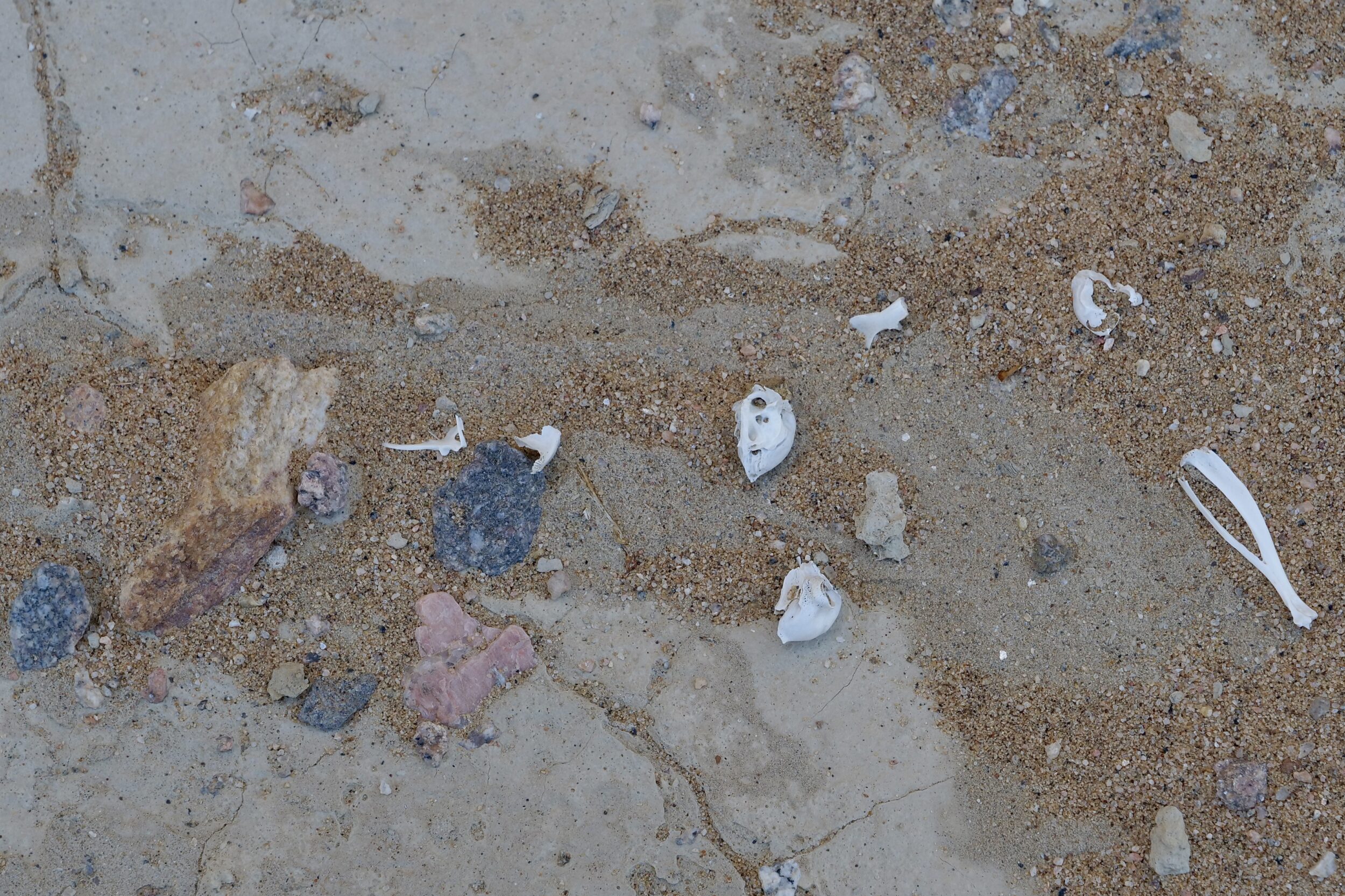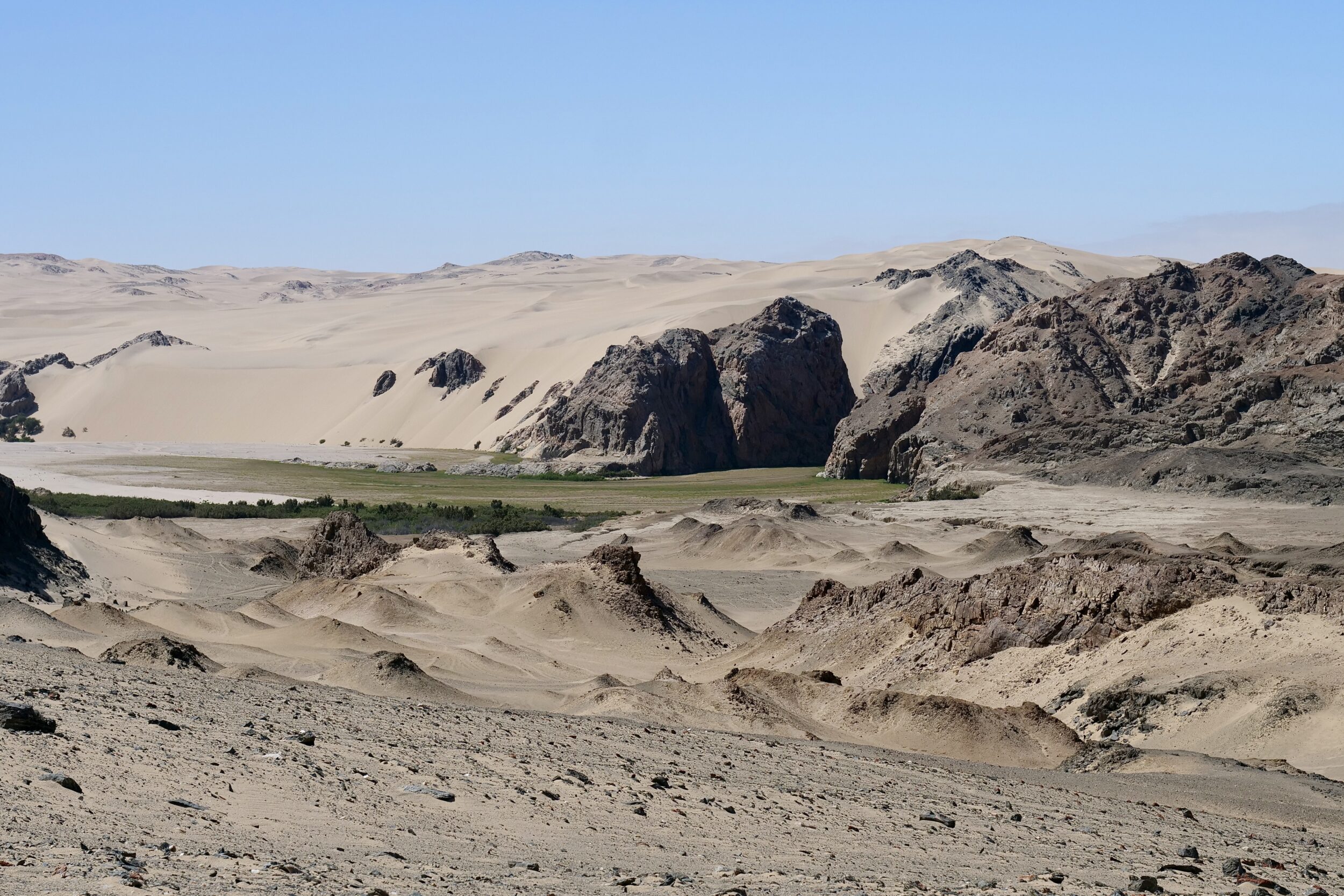Absolutely nothing “artificial” is going on here, and you are indeed looking at one of the least-rainy places on our planet – a few kilometres in from the “Skeleton Coast”, on the Namib’s western edge.
Presumably/perhaps, there is a rock barrier below the dune on which I stood, at 10.24 am on 14 November 2022.
(dolerite “dikes” are a common landscape feature, above ground, in northern Namibia)
In any event, the “surprising” mini-forest in front of me could not survive on light and fog alone!
Comments closed